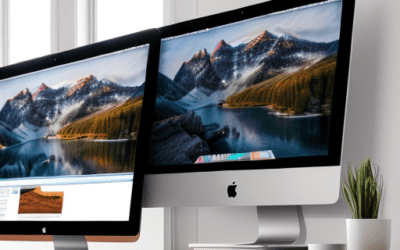In today’s digital landscape, websites have become indispensable tools for businesses to showcase their products and services, engage customers, and generate leads.
However, with the ever-increasing competition in the online sphere, having an aesthetically pleasing website design is no longer enough. Businesses must also create an intuitive and user-friendly website navigation system that encourages visitors to explore the site and take the desired action. This is where navigation design comes in.
NAVIGATION DESIGN AS AN ART
Navigation design is the process of organizing and structuring a website to make it easier for visitors to explore and access content on a website. At its core, it involves creating a logical structure that allows users to identify their current location on the website, determine where they want to go, and get there in the most direct route possible — kind of like a virtual map.
The website’s navigation design is an art form in its own right, as it requires a careful balance of aesthetics, usability, and functionality to create a user experience that is both visually pleasing and easy to use.
Generally, a well-thought-out navigation design should fulfill two primary goals. First, it should provide visitors with a clear roadmap for exploring the website and accessing the content they seek. And second, it should be engaging enough to keep visitors on the site for longer periods of time.
CREATING AN INTUITIVE NAVIGATION DESIGN
While there is no single formula for creating the perfect navigation design, certain best practices can help you make an intuitive and user-friendly website.
Here are some key steps you can take to create an effective navigation design:
- Establish a clear website hierarchy.
Think of your website as a tree structure with content organized into categories, subcategories, and pages. For instance, if you have a clothing website, your content might be organized into categories like Men’s Clothing, Women’s Clothing, and Accessories. Each of these categories could then be further divided into subcategories, such as Shirts, Pants, and Shoes.
Establishing a clear hierarchy will not only make it easier for visitors to find the content they are looking for, but it will also help you create a more organized structure on the back end, making it simpler to update content and add new pages. - Choose the right navigation labels.
Once you have created the website hierarchy, you need to ensure that the labels for each link clearly convey the page’s content. A good navigation label should be concise and descriptive so that visitors can quickly determine where it will take them on the site.
Avoid using generic labels like “Products” or “Services,” as they may not be descriptive enough to provide visitors with a clear understanding of the page’s content. Instead, opt for more specific and succinct labels like “Car Accessories” or “Financial Planning Services.” With these labels, visitors will better understand what to expect when clicking the link. - Utilize visual cues.
Using visuals in navigation design is a powerful way to orient and guide users through their journey. These visual cues can take the form of arrows, icons, or colour coding.
For example, if you have a “checkout” page, you can incorporate an icon of a shopping cart that takes the user straight to the page. Or you can use a set of arrows to show the path to follow if they want to purchase a product.
Using these cues helps users understand what they are expected to do, and it can make navigation more accessible and intuitive without having to read too much text. It’s also a great way to add some personality to your website design, as it can be used to integrate your brand’s colours, logos, and graphics. - Use drop-down menus and breadcrumb trails.
Incorporating drop-down menus and breadcrumb trails are two great techniques to help organize large amounts of content while keeping the site’s navigation structure uncluttered.
Drop-down menus are useful for displaying a list of related pages without taking up too much space in the navigation bar. This menu type allows visitors to quickly access different sections of your site without having to scroll through long lists of links or use cumbersome search methods.On the other hand, breadcrumb trails provide users with a visual indicator of their location within a website’s hierarchy. It displays the path from the home page to the current page in the form of clickable links, making it easier for users to navigate back and forth between different sections of the website.
- Add search functionality.
No matter how intuitive and organized your website navigation design is, it’s still likely that some visitors will get lost at one point or another. That’s why having a search bar on the site can be incredibly useful for users who don’t want to take the time to explore the navigation menu.
By adding a search bar, visitors can simply type in their query and get the results they are looking for without having to click around the site. Additionally, AI technology is also helping to improve web accessibility by providing voice search capabilities and auto-fill options that offer users a quicker and easier way to access the content they want. - Make sure it is responsive.
Nowadays, more people use mobile phones and tablets to access websites, so your navigation design must be optimized for different devices. This means ensuring that the links are easily clickable on smaller screens and that the menu items are properly spaced out to make them easy to tap with a finger.
Creating a responsive navigation design will make it easier for users to access different sections of the website and ensure that visitors have an enjoyable and seamless experience regardless of what device they are using.
THE BOTTOM LINE
Creating an intuitive and user-friendly website navigation design is key to providing visitors with a positive experience on your site. However, there’s no one-size-fits-all approach to navigation design — it will vary depending on your website’s content, structure, goals, and audience.
So, once you have set up your navigation design, it’s important to keep an eye on how visitors are interacting with the website. Are they able to find what they’re looking for? Is there a particular page or section of the site not getting as much traffic as you had hoped? Answering these questions can help you identify areas of the website that need improvement.
By following these steps, you can create a seamless and engaging navigation system for users that will maximize the potential of your website and help you stand out from the competition.






